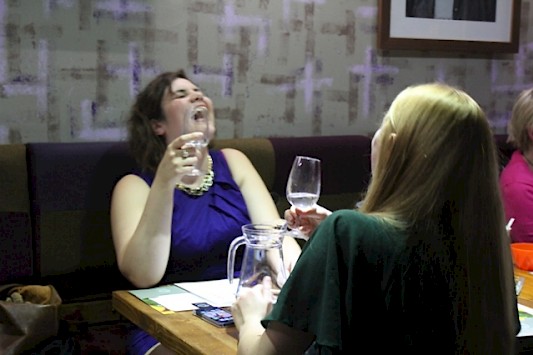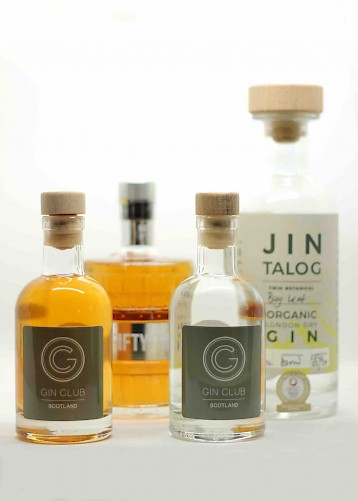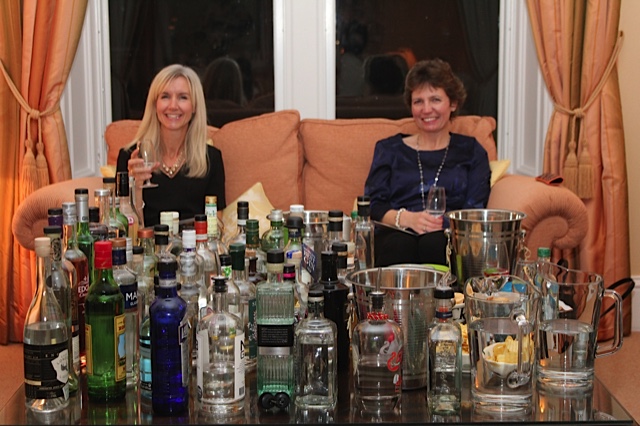
It’s fair to say that gin goes back a bit. In fact, it’s said that as far back as 1585 English soldiers were knocking back a juniper-based spirit to calm their nerves before battle when they were helping the Dutch fight the Spanish in the Eighty Years' War. Not surprising that the term Dutch Courage has stuck.
Assuming that’s true, this probably means that the Dutch physician Franciscus Sylvius didn’t invent gin in the mid 17th century, despite getting the credit. What he did do, though, was make it popular. By 1670 malt spirit or malt wine re-distilled with juniper was sold in pharmacies and used to treat medical problems such as kidney and tummy troubles, gallstones and gout.
In 1689, it hit England. The Dutch prince William of Orange came to the British throne, bringing the juniper spirit with him. Widely known for his hatred of all things Catholic, he imposed huge duties on imported spirits from France – which meant people turned to gin for a cheaper tipple. With unlicensed gin production legal at the time, thousands of gin-shops sprang up across the country, creating the Gin Craze.
By the 1720s and 1730s, cheap gin was so popular with the poor that the death rate outstripped the birth rate and it was dubbed Mother's Ruin. Given it was generally laced with oil of sulphuric acid and turpentine, this isn’t exactly a surprise. Two Gin Acts later, though, with high taxes on retailers, gin was no longer cheap and no longer the poor man’s drink.
Throughout the 1800s, people drank Old Tom, a sweeter, cordial gin which has recently seen a resurgence. A picture of an old tomcat would hang outside a tavern and a passer-by in need of a sharpener would insert a coin into a slot underneath – then a reviving measure of gin would be poured down a tube from inside. The good old days!
Meanwhile, overseas, ex-pats in tropical British colonies used gin to take the edge off the bitter flavour of quinine, which was an anti-malarial. The quinine was dissolved in carbonated water to form tonic water – and there you have it: today’s G&T.
In the early 1900s, the taste for sweet drinks waned and London Dry Gin became the preferred cocktail spirit – with a Dry Martini the hot favourite. Cocktails stayed popular during the prohibition era in the US as thirsty entrepreneurs invented Bathtub Gin. This combined industrial alcohol, glycerine, juniper oil and water from the bath tap with fruit juices and mixers – creating a raft of new cocktails.
The 1920s and 1930s were the golden age of gin, with barmen and cocktail experts from the US flocking to London. It was the drink of choice among Hollywood stars and remained the dominant white spirit right up until the early 1960s. Then vodka came along and the gin bottle was pushed to the back of the drinks cabinet.
By the 1970s, gin was the boring drink your parents drank. But the Bombay Sapphire launch in 1988 changed all this: the unusual blue bottle and juniper-light profile attracted a new following. It reinvented the category and opened the door for Hendricks 10 years later, complete with apothecary bottle and cucumber perfect serve.

The surge in gin's popularity has seen a dramatic rise in the number of craft gin-makers. Just five micro-distilleries opened in the UK between 2008 and 2011, and the same number opened in 2012. But distillery licence applications are now skyrocketing and there were over 50 craft distilleries operating in Scotland alone in 2017. This makes the craft distilling movement one of the most exciting trends to emerge from the world of drink in recent years.
The burgeoning popularity of craft gin is down to several factors. Firstly, in the late 1990s, HMRC made a small but hugely signifcant tweak to regulations about the size of stills. Secondly, perhaps as a result of the 2008 financial crisis and resulting recession, consumer spending has undergone a marked shift towards seeking authenticity and choosing quality over quantity. So while alcohol consumption is levelling out, people are spending more on locally sourced ingredients and flavour innovation. In a nutshell, consumers care more about where their food and drink comes from, and how it is made. And thirdly, each craft gin has its own distinct profile. While there isn't a great deal of difference in taste between brands of vodka, with gin there are huge variations. This has prompted a shift in the demographic of gin-drinkers: 20 and 30-somethings are really getting into the spirit of gin, while the classic gin consumers of the older generations are still drinking it too.
At the moment, global sales of gin are up about 4% year-on-year, bars and supermarkets are stocking more brands, and consumers are much more interested in the story and provenance - not just in buying the cheapest gin available. All in all, the future of the industry is looking very good. Let's drink to that!

SaveSave
To access Gin Club Scotland you must be of legal drinking age in your country of residence.